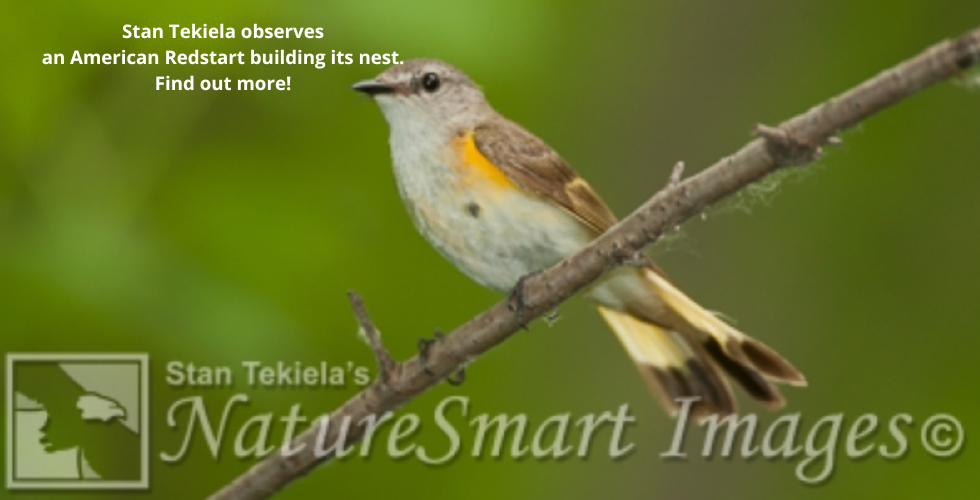
The American Redstart: A Fairly Common, Yet Unique, Warbler
Wildlife photographer and naturalist Stan Tekiela encourages others to look closely at nature. Here is his latest discovery about the American Redstart. While fairly common, the Redstart, like all birds, is unique.
The key to “seeing” nature is to stop and look. I know that seems rather obvious, but it’s true. The simple act of stopping and looking is really all it takes to see more nature. This is something I learned a long time ago, but it seems that I need to stop and remember it every now and then.
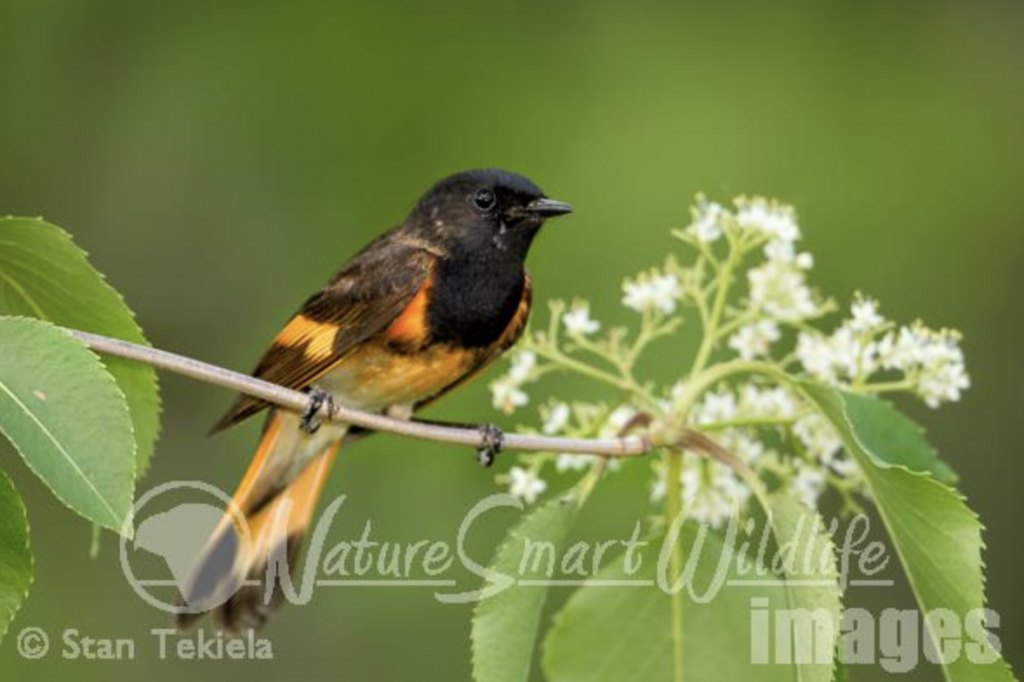
Yesterday, while filming for a new nature documentary about a 500-acre-plus mixed woodland and riparian area, I stopped to check out a very small stream. It turns out the stream was more like a trickle of water; however, while standing and just enjoying the sight, I noticed some movement just in front of me.
I could see immediately a tiny, drab bird—a female American Redstart (Setophaga ruticilla). The American Redstart is a fairly common warbler species. Its unique name “Redstart” refers to the male’s red markings on the side of the tail. The word “start” is an Old-World word for tail. So Redstart literally means “red tail.”
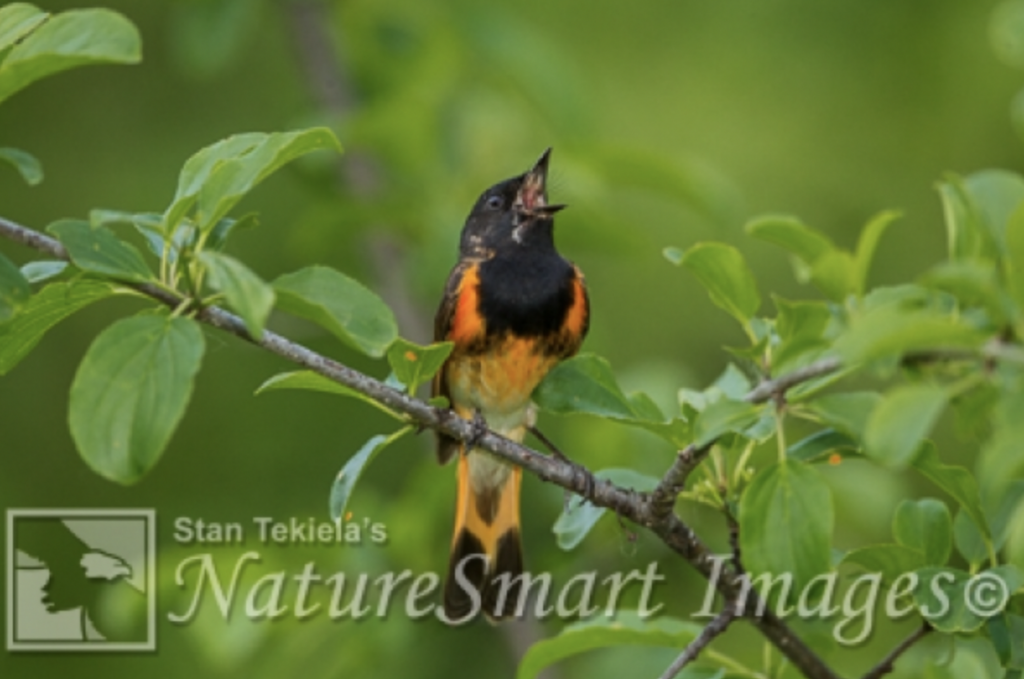
Although the female has the same color pattern as the male, she is yellow, not red. They nest in open woodland habitats throughout the eastern half of the country. When I say “they” nest, I mean, it is the female who builds the nest, lays the eggs, and does all the incubation.
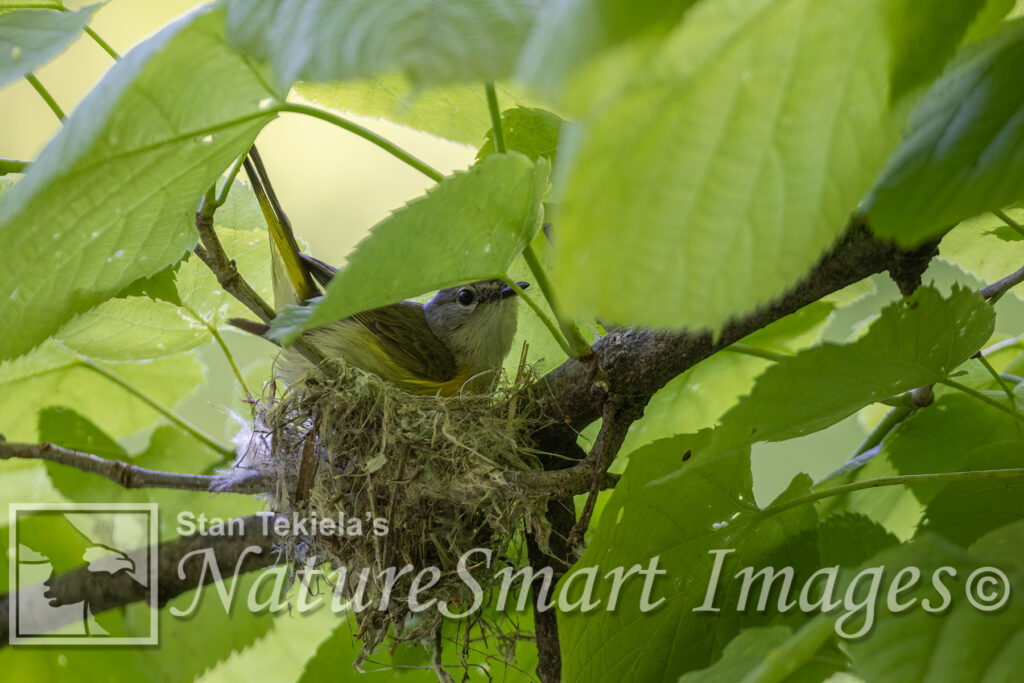
Highly migratory warblers, they spend their winters in Central and South America, returning to the eastern US in late spring. It is important to understand that when these birds are down in the tropics for the winter, they are not nesting there. They spend their winter resting and feeding and getting ready for spring when they migrate thousands of miles back to the forests of the eastern US to nest. I am hoping that right now you are having an “aha” moment and realizing that your backyard woodlot is the key to this bird’s survival. Your woodlot is the only place where this bird nests.
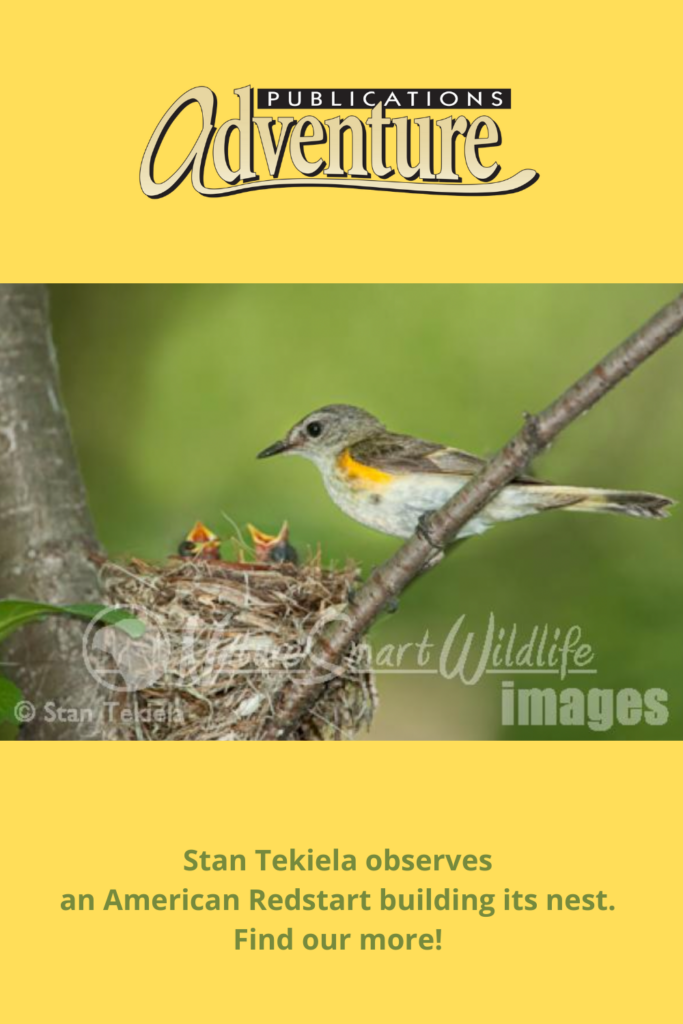
I had stopped to check out a tiny stream when I spotted this female American Redstart. I could identify it instantly. I could also see what she was doing right away. She was stripping fine fibers from last year’s plant stems. This can only mean that she was gathering nesting materials. It only took watching her for another few minutes to see where she was going and to locate the nest she was building.
I find the simple act of a tiny bird using only its beak to gather all the materials needed to make a nest, then using the same tiny beak to weave the materials together to construct something strong enough to hold the eggs while she incubates them for several weeks, and also to hold the young birds after hatching. This is truly remarkable.
As I sat and filmed this remarkable little bird building its nest, I started to count the number of trips it took to bring in its nesting material. In just one hour, she came to the nest 28 times. That is about once every other minute. Hundreds, if not thousands, of trips are needed to complete a nest. She constructs a cup nest, which is an open-top nest shaped like a small teacup.
Redstarts usually build their nests near water, only 5-10 feet off the forest floor. They lay anywhere from two to five eggs. Only the female incubates the eggs. The young stay with the adults for about three weeks before they are on their own.
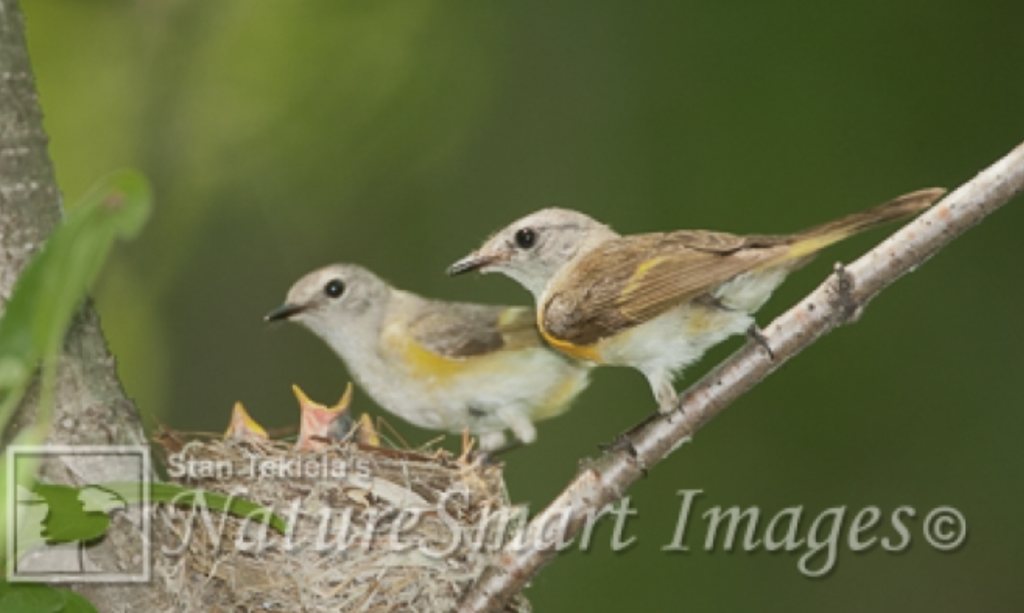
The nest needs to be strong enough to last for about two weeks of incubation and another 9 to 10 days after the chicks hatch and start to fly. After the young leave the nest, they won’t return to it, and the female won’t use it a second time. So all of this effort is for a relatively short time of use.
I had a lot more filming to do, so I needed to leave the female American Redstart after just one hour. But if I hadn’t stopped to get out of the car and take a look at something else, I would have driven right by and never seen this little beautiful bird doing a truly remarkable thing.
If you enjoyed Stan’s post, you may enjoy one of his amazing nature books: Wild Birds, Backyard Birds: Welcomed Guests at our Gardens and Feeders, and Bald Eagles: The Ultimate Raptors.
You can follow Stan on Facebook and Twitter, or contact him via his web page. Stan’s nationally syndicated NatureSmart Column appears in more than 25 cities spanning 5 states (Minnesota, Wisconsin, Michigan, Illinois, and Pennsylvania) and is circulated to more than 750,000 readers.
For more stories about wildlife and nature, sign up for our newsletter now!


